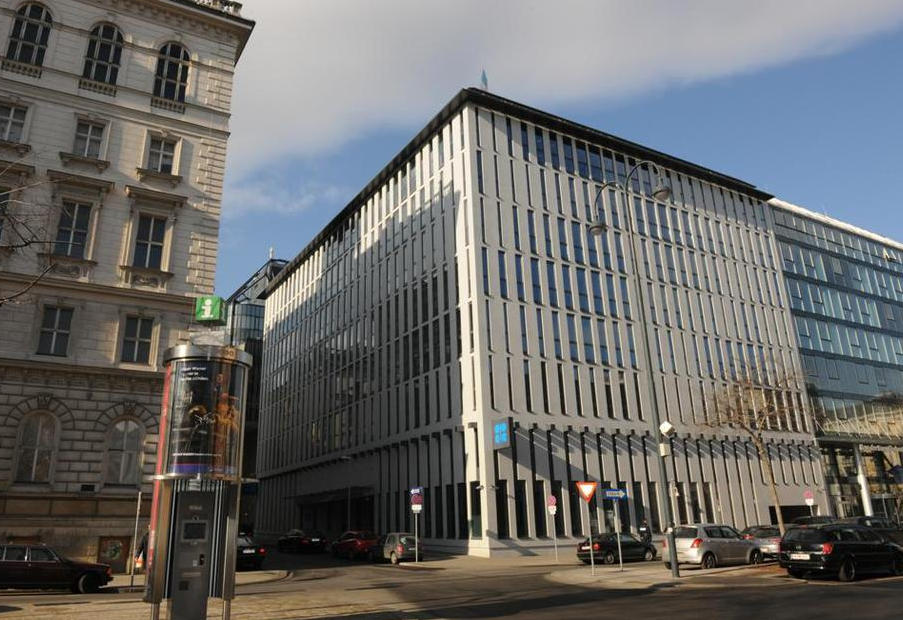
At the heart of Korea’s Onsan Refinery lies a street called “A.I. Naimi Road,” an homage to Saudi Arabia’s oil minister. The reason: state-owned Saudi Arabian Oil Co. holds a 65 percent stake in the complex.
Taking a controlling interest last year in South Korea’s third-largest refinery highlights the shifting dynamics of the oil business. With crude prices down by more than half in the past two years, the Saudis and other oil-rich countries are fighting to lock in customers. Asia, which now accounts for 70 percent of Saudi oil exports, is the primary battleground.
For Saudi Aramco, as the company is widely known, that means purchasing stakes in refineries, with contracts guaranteeing most of the oil will come from the kingdom. Aramco has invested in three processing facilities in Asia. As Iran prepares to boost its own exports, the Saudis are on the cusp of a dramatic increase in its commitment to the region, eyeing billions of dollars of projects in countries from Indonesia to Vietnam.
Owning refineries in Asia is “part of a long-term strategy to consolidate” the Saudi market share in a key region, said Mustafa Ansari, an analyst at the Arab Petroleum Investment Corp., a state-controlled development bank in Dammam, the city at the heart of Saudi oil country.
The Saudis pursued a similar path in the U.S. three decades ago to lock in sales as crude prices tumbled, buying into three oil-processing facilities in Texas and Louisiana since 1988. The strategy worked: Motiva Enterprises LLC, the U.S. refiner half- owned by Aramco, imported 65 million barrels of Saudi oil in the first eight months of 2015 — more than triple what ExxonMobil Corp. got from the kingdom in that time, U.S. government data show.
Key Moment
The push into Asia comes at a pivotal moment in Saudi Arabia. With oil revenue falling after crude slumped 34 percent this year, the kingdom is tightening its belt just as a new king ventures away from the kingdom’s traditionally conservative diplomacy. The International Monetary Fund predicts a budget deficit exceeding 20 percent of economic output this year.
At Aramco, meanwhile, recently appointed Chief Executive Officer Amin Nasser is overseeing a plan to make the world’s biggest oil company a more integrated operation. Long focused on producing crude, Aramco plans to almost double its refining capacity by 2025 to 10 million barrels a day, equivalent to its current output of oil. That would put Aramco ahead of ExxonMobil as the world’s largest refiner.
In Vietnam
Other oil-producing countries are pursuing a similar strategy. Kuwait is scheduled to open a refinery in Vietnam that is contracted to get more than 90 percent of its crude from the emirate. Oman owns half of a refinery in India and a smaller stake in a petrochemical plant in China. Iran and Qatar have floated the idea of investing in processing facilities in the region.
The Saudis, though, have a big lead. In 2004, Aramco bought 15 per cent of a Japanese refinery with a capacity of 395,000 barrels a day, and in 2007 it paid $1.3 billion for a quarter of a refinery in Quanzhou, China, with a capacity of 240,000 barrels. Aramco originally invested in the Korean facility (with a capacity of 670,000 barrels daily) in 1991, and last year paid another $2 billion to increase its stake from 35 percent.
The grand prize — and the biggest headache — is China. The Saudis started to ship oil to China in the late 1990s and had little competition there in the following decade. But the market is getting crowded, with Russia this year topping the Saudis as China’s biggest supplier of crude, and Iraq and Angola making inroads.
Aramco has appointed Nabil al-Nuaim, a former director of its venture in Japan, to head its Asia office in Beijing. Al- Naimi, the oil minister, last year promoted Mohammed al-Madi, a Mandarin speaker with a PhD from the China University of Petroleum who once ran the Asia business, as his No. 2 at Opec meetings.
China Market
Since 2011, Aramco has been talking to China National Petroleum Corp. about a facility with a capacity of 260,000 barrels a day in Yunnan province, a mountainous region that borders Vietnam and Laos. Though the two sides agreed in 2011 that the Saudis would control 40 percent of the venture, there’s been little visible progress.
“The biggest problem for Saudi Aramco is that fuel markets in several key Asian countries aren’t liberalized,” said Bassam Fattouth, director of the Oxford Institute of Energy Studies. Officials often require refiners to sell gasoline and other fuels at subsidized prices — or even at a loss — he said.
Though China has taken steps to reduce fuel subsidies, it’s still tough to make a profit selling gasoline and diesel there.
“We would like to multiply our investments in China,” particularly in refining, Aramco Chairman Khalid al-Falih said in Beijing in March. “While recent reforms will help, expanding our presence in China requires more available investment opportunities” — meaning a more open market.
Aramco has been more successful in Indonesia. The Saudis have a preliminary agreement to invest in a refinery with a capacity of 370,000 barrels a day in central Java, and they plan to upgrade two other facilities with Pertamina, the Indonesian state-controlled oil company. Aramco will own half of the Java plant, which will primarily use Saudi crude, according to Indonesia Energy Minister Sudirman Said, who met with Deputy Crown Prince Mohammed Bin Salman, chairman of the council that oversees Aramco, during a visit to Riyadh last month.
Recommended for you
